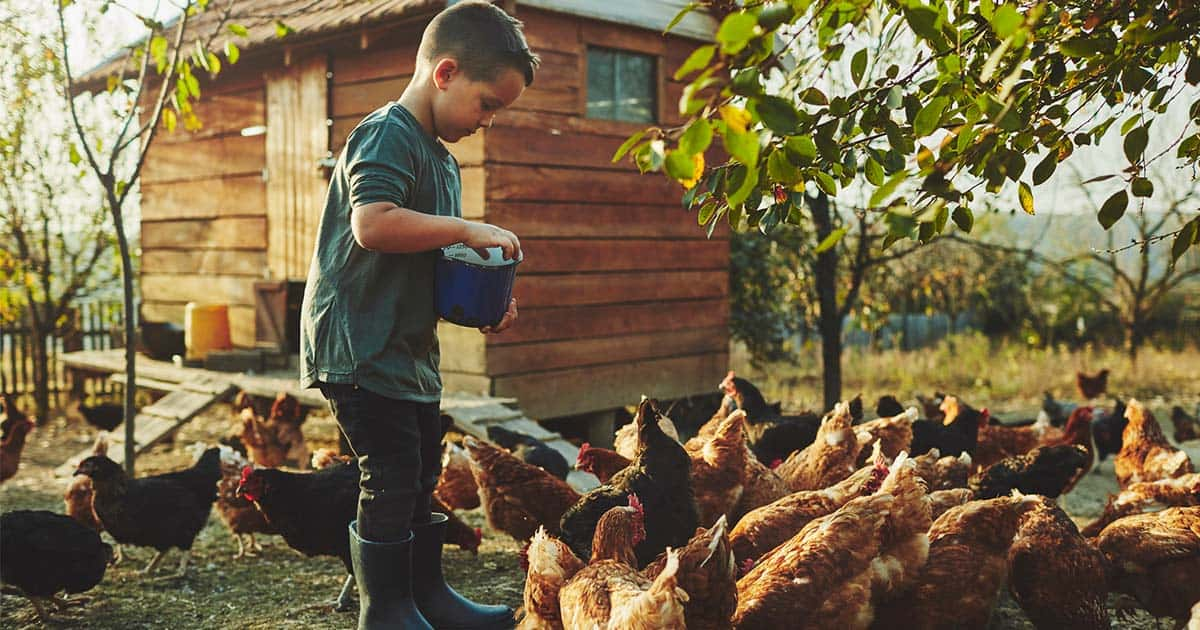Urban and Rural Chicken Coops

Urban chicken coops are becoming a trend across the country.
Canadian cities that allow chicken coops include Edmonton, Vancouver, Toronto, Montreal, and Calgary and Winnipeg has proposed a 2-year pilot program.
Many rural areas also allow chicken coops, and you can find out if your municipality does by checking local bylaws.
“Consult your local bylaws first to know if backyard hens are permitted in your area, and if there are any specific requirements that must be followed. Try searching your municipality’s name and “backyard chickens,” says the BC SPCA.
Research requirements for chicken coops before you commit
Chickens have specific requirements and raising them requires knowledge about their needs so you can provide for their well-being. There may also only be a set number of applicants per year for your municipality and you may require training before you can apply for a chicken coop.
You will have to follow municipal, provincial, and federal animal welfare and pet ownership laws and the Code of Practice for the Care and Handling of Pullets and Laying Hens and should go above and beyond the requirements. Also, make sure to have a list of veterinarians who treat chickens.
How to build a chicken coop
Do a bit of research to make sure your chickens will be comfortable in their new home. Your hen coop should include a secure outdoor run of about 60 square feet and a coop of about 36 square feet.
Roosting platforms or bars
“Roosting platforms are required in every coop and should be made as wide as possible to allow the hens to squat down on them and cover their feet with their feathers,” explains the Alberta Farm Animal Care Hen Manual. You should provide at least 30 cm per bird and your municipality may have higher requirements.
Nest boxes
Nest boxes are used by hens to lay eggs and municipalities have different rules about how many are required. You should have at least one per 2-4 hens.
Protection from predators
Your chicken coop must be protected from predators and enclosed with mesh that extends 18 inches below the ground.
Dust bath
A dust bath is important for your birds. “Chickens clean themselves by dust-bathing, the act where they roll around in dirt to clean their skin and feathers. This helps to control parasites. You can provide your birds with a dust-bath filled with a combination of peat, mulch, wood ash, sand, and/or dirt,“ explains the Hen Manual.
Water
There are different types of waterers; choose one that is easy to clean and will not become clogged. In the winter you will need a heated waterer. Make sure to clean it often.
Food
“The ideal poultry feeder discourages the bird from sitting in or on top of it, so the feed stays clean. Hanging feeders are common and are easy to adjust based on the bird’s height,” says the Alberta Farm Animal Care Hen Manual. You can make your own out of PVC pipe or buy one.
Air quality and temperature
Your chicken coop must be well ventilated, and humidity should be kept around 50%. Chickens do well in temperatures as cold as –10 degrees Celsius with the correct humidity and coop setup, but you should have an electric heat source. Install a weather station to help you monitor humidity and temperature. The inside of the coop should be well insulated for the winter.
Litter
Shavings (except for cedar), straw, and sand are suitable litter materials. “Provide 1-2 inches of litter in the summertime and 4-6 inches in the winter,” says the Hen Manual. Make sure litter is absorbent and non-toxic. Check with your municipality about how you can dispose of coop waste.
Chicken coop maintenance
Your chicken coop will require daily, weekly monthly, and seasonal maintenance. The Alberta Farm Animal Care Compre’hen’sive ‘Chick’list provides guidance.
For 4-8 birds, you should expect to spend 15 minutes in the morning and evening on daily tasks like providing fresh food and water, opening, or closing the coop, checking weather, turning the light on or off, cleaning roosts, and replacing soiled bedding.
You will also need to clean up spilled water and food, check health and behaviour, collect eggs, refill grit, oyster shells, and scratch (in the winter), update records, and dispose of mortalities.
Weekly maintenance should take about an hour, and you will need to clean and disinfect waterers, check the dust bath, inspect the coop, and assess the litter.
Monthly maintenance should take about three hours and includes thoroughly cleaning the coop and picking up bedding and feed. Seasonal tasks include adjusting for weather, veterinary care, and deep cleaning the coop.



